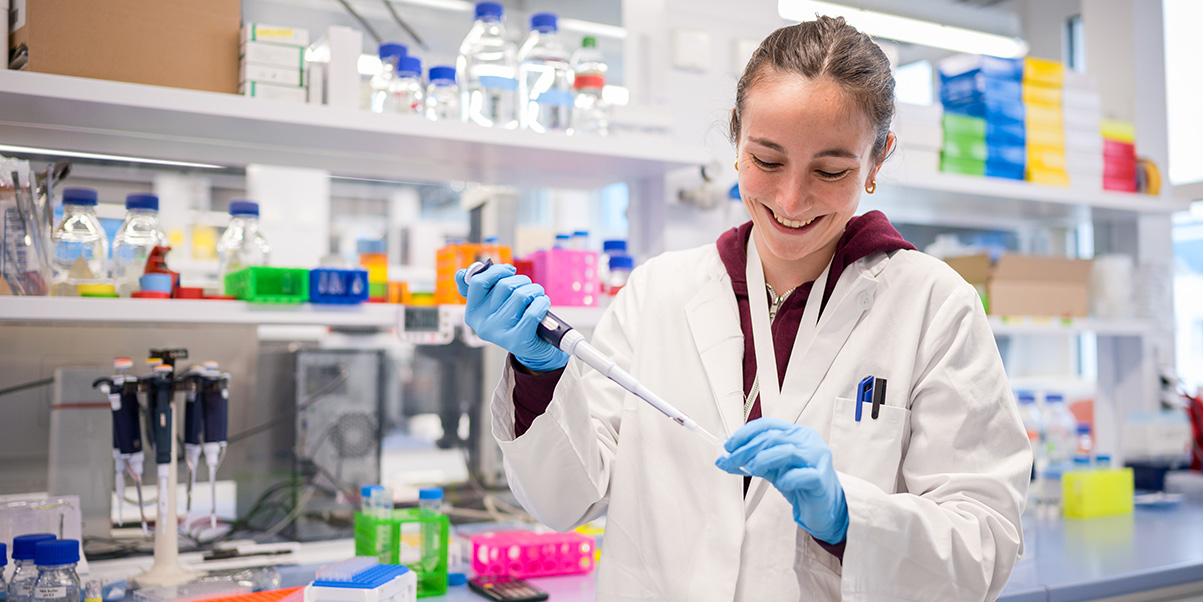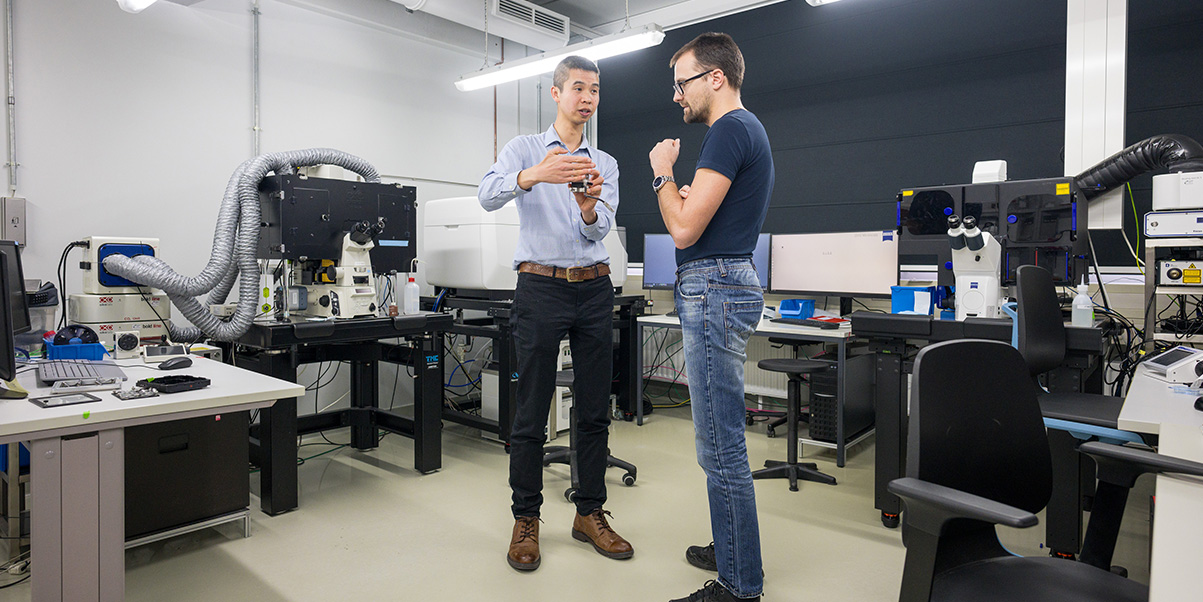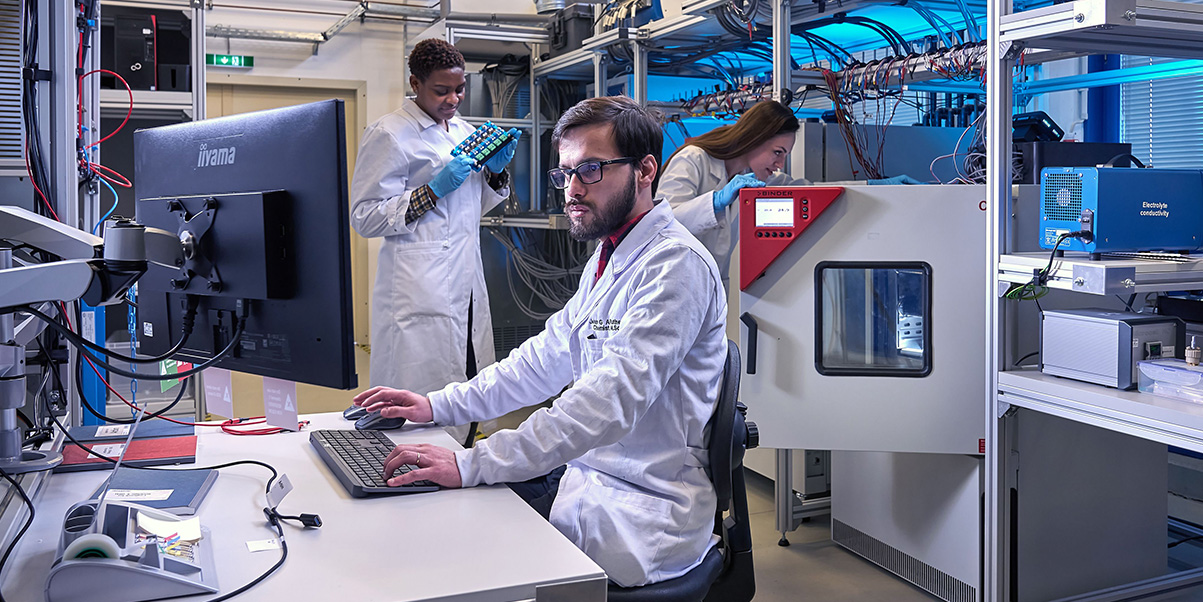New Materials and Innovation
New materials are the drivers of new technologies. INM combines the two worlds of multidisciplinary scientific research and material-oriented technology transfer under one roof. Chemistry, physics, biology, materials science, and engineering interact in close cooperation and at high level. An essential focus of our work is the transfer of biological principles to the design of new materials, structures and surfaces. Our results create and improve flexible displays and intelligent grippers, high-performance batteries and efficient solar cells or technologies for personalized therapies and regenerative medicine.
The INM, based in Saarbrücken, Germany, is connected with numerous research organizations and technology companies worldwide. The INM is closely linked to Saarland University through four joint professorships, an honorary professorship and an associated junior professorship. The INM is an institute of the Leibniz Association and employs around 250 people.
Million Euro in Annual budget 2023
Million Euro Third-party funding 2023
Peer-reviewed articles 2023
Active patent families
Employees in 2023
Nationalities
People at INM

- 65 Scientists (f 25, m 40)
- 54 Doctoral students (f 27, m 27)
- 47 Tech-, Lab- & Service Staff (f 23, m 24)
- 33 Administration (f 23, m 10)
- 21 Student assistants (f 11, m 10)
- 7 Trainees (f 2, m 5)
as of: 30.04.2024
Impressions
History
The INM – Leibniz Institute for New Materials was founded in 1987 as one of the pioneer institutes for research and innovation in chemical nanotechnology under the direction of Prof. Dr. Herbert Gleiter (1987-1990), Prof. Dr. Helmut K. Schmidt (1990-2005) and Prof. Dr. Michael Veith (2005-2007). Since 1999, the INM is part of the Leibniz Association and is jointly funded by the Federal and State Government
Since 2005, INM has progressively expanded its scientific profile in the field of hybrid materials and the transfer of biological principles to the design of new materials and devices. This expansion was initiated by the director Prof. Dr. Eduard Arzt (2005-2022), and is further developed by the current directors, Prof. Dr. Aránzazu del Campo (since 2015) and Prof. Dr. Wilfried Weber (since 2023). Today, INM pioneers the emerging field of engineered hybrid materials that integrate living and chemical components to address imminent societal and environmental challenges.






